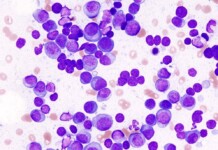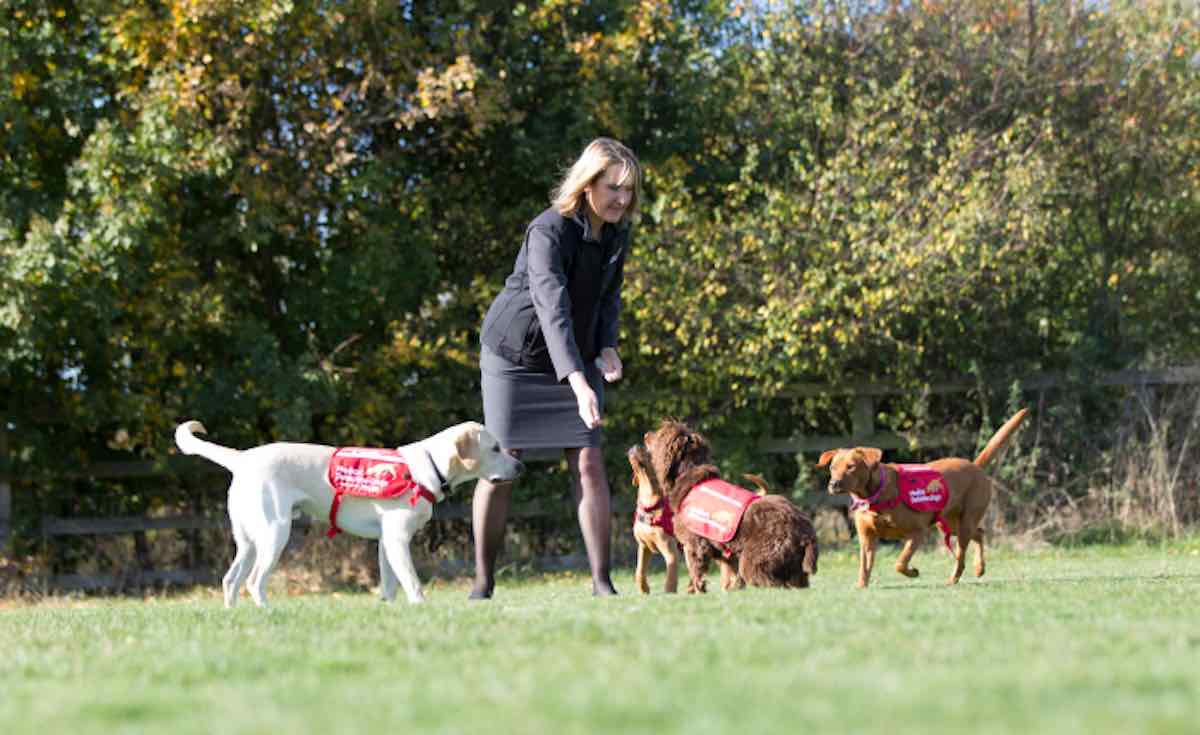Continuing the global battle against malaria, scientists are using a novel tool for the fight: sniffer dogs.
In recent tests, trained sniffer dogs were able to successfully diagnose malaria infections simply by sniffing samples from socks worn briefly by children from a malaria endemic area of West Africa, according to a new study presented today by the American Society of Tropical Medicine and Hygiene (ASTMH).
“People with malaria parasites generate distinct odors on their skin and our study found dogs, which have an incredibly sensitive sense of smell, can be trained to detect these odors even when it’s just on an article of clothing worn by an infected person,” said Steven Lindsay, the lead investigator on the study.
The research was conducted in collaboration with experts from Medical Detection Dogs, a charity that trains dogs to detect a variety of maladies, including cancer and people at risk of slipping into a diabetic coma.
RELATED: Shelter Offers “Unadoptable” Feral Cats to Hunt Rats —With Big Success
The canine malaria detection work was supported by a Grand Challenges grant from the Bill & Melinda Gates Foundation, which is seeking, among other things, new ways of diagnosing the disease that are non-invasive and quick. New tools are urgently needed because, after more than a decade of dramatic reductions in malaria infections and deaths, over the last two years the world has experienced a slight increase in both.
Lindsay said the experiment began in The Gambia where several hundred school children, who had been recruited to join the trial, were checked for overall general health, sampled for malaria parasites and fitted with a pair of socks that they were asked to wear overnight. The next day, the socks were collected. The socks were sorted according to the malaria infection status of the children who had worn them. Only socks from children with malaria who did not have fever were selected, as were the socks from the children who were uninfected. The socks were then shipped to the United Kingdom where they were stored in a freezer for several months while the dogs were trained.
For the test, trained dogs had to distinguish between socks from children with malaria parasites and socks from uninfected children. They were trained to sniff each sample and to freeze if they thought they detected malaria, or move on if they did not. Using just the sock samples alone, the dogs correctly identified 70% of the infected children and 90% of the uninfected children.
MORE: Rats Are Saving Elephants From Hidden Landmines on Their Migration Routes
The researchers said the accuracy of the dogs was impressive and they were identifying malaria infected children with lower levels of parasites than required to meet clinical standards for rapid diagnostic tests set by the World Health Organization (WHO). However, in the future this work needs to be expanded with more samples tested from different parts of Africa.
But Lindsay said the dogs’ success rate actually might have been higher – up to 78% – if the children with malaria were all carrying the same type of parasites. As malaria infections progress, the parasite goes through several stages of development. And Lindsay thinks that when it reaches a certain stage of maturity, the odor it generates on human skin changes.
Further testing revealed some of the children were carrying these more mature parasites. But the dogs were not trained to detect their odor. Moreover, the researchers pointed out that the success rate potentially could have been higher if the dogs were actually with the children or were working with socks that had been worn recently, instead of samples that had been frozen for several months while the dogs were being trained.
CHECK OUT: FDA Grants ‘Breakthrough’ Status to Psilocybin Mushroom Therapy for Untreatable Depression
However, Lindsay and his colleagues said their work was only designed to be a “proof of concept study” to show that malaria diagnosis by dogs is possible. They believe that with more training and more samples, the dogs could end up with an accuracy that would be comparable to a clinical test.
As for putting malaria detection dogs to work in the field, Lindsay said they could be helpful assistants in a malaria elimination campaign that requires treating anyone in a village or community who is still carrying malaria parasites, including those who are not showing symptoms. Currently, the only way to address the problem of “asymptomatic” carriers – who still can cause new infections by passing along their malaria parasites to the local mosquito population – is to test or treat an entire community.
The dogs could also be useful for ports of entry into countries which eliminated malaria or are close to elimination.
WATCH: Dog Insists On Saving Every Stranded Earthworm, Gently Lifting Them Onto the Grass
“With this innovative approach, these researchers show that new tools to tackle malaria can come from unexpected places,” said ASTHM President Regina Rabinovich.
(Source: American Society of Tropical Medicine and Hygiene)
Cure Your Friends Of Negativity By Sharing The Good News To Social Media – Photo by Durham University / Medical Detection Dogs / London School of Hygiene and Tropical Medicine




















